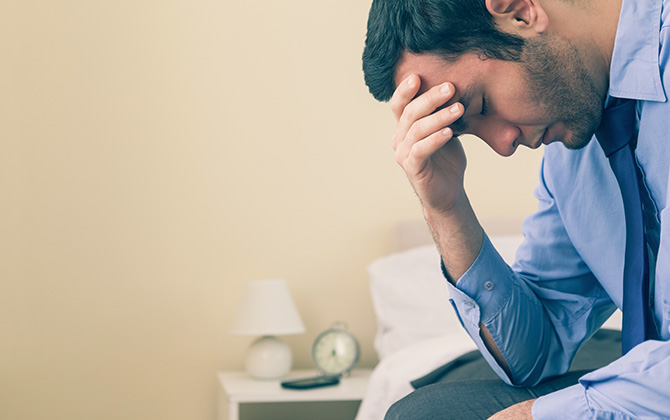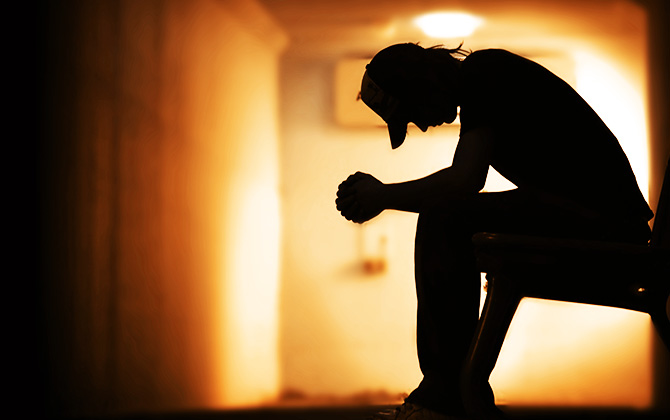Whilst the prevention of suicide has remained a universal and global challenge for generations, it’s arguably more pertinent now than at any point in history.
After all, suicide rates have increased throughout the world in recent times, with social, economic and technological changes have all played a role in this shift.
From my own experience, I also understand how physical conditions such as premature hair loss can also undermine an individual’s self-esteem, whilst exacerbating symptoms of anxiety, stress and depression.
We’ll explore some of these triggers later in the post, whilst charting the rising prevalence of suicide and asking what can be done to protect those who are at risk.
Exploring the Rate of Suicides Globally and in the UK
Since the turn of the century, there’s little doubt that we’ve seen the rate of suicide increase incrementally in countries across the globe.
Whilst this has helped to create far greater awareness of mental health issues and the factors that cause people to take their own lives, it’s also an incredibly worrying trend that seems to be worsening with every passing year.
In general terms, suicide remains amongst the top 20 causes of death globally, whilst this is true across multiple demographics. On average, it’s responsible for more than 800,000 deaths each and every year, and this equates to one suicide every 40 seconds.

If we drill deeper into these numbers, we can start to identify the regions and countries that suffer the highest rates of suicide. After all, the World Health Organisation (WHO) regularly collates data from the world’s governmental agencies, whilst Business Insider recently created this map to help highlight the global citizens that are most at risk.
Now, it’s important to note that suicide rate data from China and India is not typically included in WHO data sets, primarily because these nations don’t share information with external or centralised bodies.
According to estimates from 2011, however, China experiences approximately 22.2 suicides per 100,000 people, whilst a survey published in The Lancet in 2012 estimated a corresponding rate of 22 deaths per 100,000 people in India.
These rates are notably higher than the vast majority of nations across the globe, whilst they feature in the top in relation to the rate of suicides per 100,000 citizens. With South Korea also featuring a suicide rate of 26.3 per 100,000 people, it’s little wonder that this issue is considered to be most prevalent in Asia.
Interestingly, suicides are also noticeably prominent in Eastern Europe, with Lithuania, Russia and Kazakhstan amongst the most afflicted countries according to the WHO.
In the case of Lithuania, there’s an estimated suicide rate of 28.6 per 100,000 people, whilst the corresponding figure in Kazakhstan is 23.5. At the same time, Russia is thought to have a suicide rate of 22.8 per 100,000 people, at least according to the most recent data sets gathered in 2009.

If we move west towards central Europe, we begin to see a significant decline in the prevalence of suicide amongst the general population. However, there are signs that the rate of suicide is beginning to rise incrementally across the continent, with the UK experiencing something of an epidemic in this respect.
If we review the WHO data collated back in 2010, the rate of suicide per 100,000 people was relatively low at 6.0. However, this figure had already increased incrementally during the previous eight years, whilst the issue has become even more prominent since this date.
Earlier this month, The Guardian revealed that the rate of suicide on these shores had increased markedly since 2012, whilst last year saw 6,507 people take their own life nationwide.
This equated to a suicide rate of 11.2 per 100,000 Brits, with this number has nearly doubled in just eight years. At the same time, these findings highlighted a worrying 11.8% increase in relation to 2017’s numbers, and there’s no sign of this trend abating any time soon.
I was even more alarmed to learn about a significant increase in the number of people aged between 10 and 24 killing themselves in the UK, as the overall rate for this demographic reached a 19-year high.
Whilst young females were thought to be particularly at risk, the figures also showed that three-quarters of the Brits who committed suicide last year were male. This means that older men and Millennials are at risk in the current social climate, and we’ll explore why this may be the case a little later on.
Why is Suicide on the Rise? The Key Considerations
When it comes to accounting for the sudden spike in suicides across the globe, it’s hard to pinpoint the precise triggers and causes.
Whilst some have cited the rise of technology as having increased isolation for users and introduced concepts such as cyber-bullying, for example, others have argued that innovation has actually decreased loneliness and enabled individuals to connect more easily with the world around them.
With this in mind, it’s important to explore the seminal factors that are likely to increase the risk of suicide in specific geographic regions. If we consider nations in Asia and Eastern Europe, for example, we see that many of these countries feature oppressive governments and societies that are far less inclusive than those in the U.S. and the UK.

India, Russia and Kazakhstan certainly have particularly regressive laws in relation to lesbian, gay, bisexual and transgender (LGBT) rights, meaning that those who fall under this banner often experience oppression (both from legislative bodies and society as a whole).
Even in China, we see that same-sex sexual activity has only been legal since 1997, whilst it wasn’t until 2001 that homosexuality was declassified as a mental illness.
This hints at a restrictive climate for members of the LGBT community, for whom continued oppression and an underlying lack of social acceptance can trigger symptoms of depression and increase the risk of suicide.
Such issues are not as prevalent in the UK, of course, where the LGBT community has equal rights and gay marriages are now permitted by law.
So, what exactly is behind the exponential rise in suicides in the UK? Once again, there’s no simple answer, although one potential explanation may lie in the prevalence of undiagnosed and untreated mental health conditions.
This can also be applied to other countries, of course, with research completed by the Centers for Disease Control and Prevention (CDC) suggesting that more than half of all suicides involved victims who had an undiagnosed mental illness.
This also ties into the rising number of suicides involving men in the UK, as males are more likely to live with an undiagnosed mental health issue over time. The reason for this is simple; as the manifestation of depression is different in men than in women, and it can be harder for both males and doctors to identify the symptoms ahead of time.
The advancements in technology have also been more pronounced in developed economies in the UK, increasing the exposure that young and potentially vulnerable people have to cyber-bullying and similar online risks.
So, for people who are already dealing with issues such as abuse and depression (or an undiagnosed mental illness), unlimited access to technology can create a significant and catalytic risk factor.
This brings us neatly on the issue of social media, with sites such as Instagram renowned for celebrating certain body types over others and exacerbating existing issues such as body dysmorphia and low self-esteem.
Whilst this is thought to be a particularly prominent issue for young females, it also applies to men and women of all ages and has seen instances of depression rise significantly throughout the western world.

This also ties into my own experience, as I suffered from significant anxiety and depression when I began to lose my hair prematurely at the tender age of 17. This experience really undermined my confidence and self-esteem, creating a sense of social anxiety and reinforcing the idea that I might be noticeably different from my peers.
Fortunately, I was able to eventually take control of my circumstances by shaving my head and embracing a bold new look, whilst I didn’t have to contend with the exposure associated with social media.
I can only imagine that this would have made my own situation worse, both from the perspective of the types of images published online and the anonymous trolling and ridicule that I would have had to endure.
We also need to consider that male pattern baldness accounts for a hefty 95% of hair loss in men, whilst two-thirds of males will have experienced some degree of appreciable hair loss by the age of 35.
With these points in mind, it’s clear that the impact of sudden and unexpected hair loss can be exacerbated by social media, and this may be influencing the rising prevalence of mental health concerns and suicide in the UK.
If you are suffering from the onset of male pattern baldness and beginning to lose hair around the temples or crown, it’s therefore important to meet this challenge head-on and deal with it in the right way.
From my own experience, this means relying on the support of friends and loved ones and using this to create the strength required to accept your new reality and move forward in the positive way possible.
The same principle can be applied to other physical issues and conditions too, as tackling these problems proactively and seeking out help can negate the symptoms of depression before they begin to take hold.
The Last Word – The Impact of Suicide and Why it Isn’t the Answer
Whilst we also consider suicide from the perspective of the individual, it’s important to note that this also impacts considerably on your loved ones and those around you.
After all, every lost life represents someone’s partner, child, parent or friend, and for every suicide, it’s estimated that approximately 135 people experience intense grief and the onset of depression.
This means that up to 108 million individuals are profoundly impacted by suicide every single year, whilst it also creates a scenario where more people are encouraged to take their own lives in the future.
This highlights the scale of the challenge in the current climate, whilst a quick glance at the potential triggers also makes it difficult to identify effective preventative techniques.
After all, there’s little that can be done to change the prevailing social attitudes in Asia and Eastern Europe (particularly in the short-term), whilst the challenges posed by technology and social media are gargantuan and require a huge amount of work and collaboration to overcome.
Even though we’ve seen several reactive measures and doctor-led interventions reduce the rate of suicide in some clinical trials of late, the success of these initiatives relies on identifying subjects who are vulnerable and aware of their symptoms and triggers.
With this in mind, it’s crucial that we continue to increase awareness of suicide and the key signs that somebody may be in need of support, as this enables us to identify when a loved one struggling and reach out them in their time of need.
There are a number of things to look out for, with people who are increasingly isolated and unwilling to interact with others clearly at risk.
Similarly, people who are relying on alcohol and drugs to cope with their emotions may also be at a higher risk of committing suicide, whilst anyone who fails to respond to messages or social invitations could be in need of urgent support.
By recognising these behaviours (either in yourself or others), you can take strides towards identifying underlying mental health issues and minimising the risk of suicide in the future.
We also need to educate men on the manifestation of depression whilst eliminating the stigma that continues to define suicide in some cultures, as adult males are less likely to seek out help in the first place and at a far greater risk of taking their own life in the current climate.
This can hopefully encourage those at risk to seek out help as proactively as possible, as it’s thought that people initially need to get through a brief, 20-minute window at a time when they’re most tempted to end their own lives.
If you’re in the UK, you can contact the Samaritans on 116 123 for 24 hours-a-day and seven days a week, whilst Childline (0800 1111) is a specialist resource for a youngster suffering from depression and anxiety.
These resources, when combined with an open mind and the full support of friends, families and loved ones, represent the best weapons in combating undiagnosed mental health issues and suicide.
If you need more help please reach out to one of the support associations below:

